Events 2007
January 25th, 2007
"Japan Mapped: Culture and Cartography" Lecture SeriesTemples and Warriors: Screens of Uji and Sagano by Kano Eitoku
Matthew McKelway
403 Kent Hall, Columbia University (116th St. and Amsterdam Ave.)
6:00 – 7:30 PM
February 1st, 2007
"Ancient Soundscapes: New Echoes from Japan's Musical Past" Program SeriesFabricating Self Image Through Music: the Ryukyu Kingdom's Artistic Strategy in Her Relationship with Japan and China
Naoko Terauchi (Kobe University and Visiting Professor, Columbia University)
403 Kent Hall, Columbia University (116th St. and Amsterdam Ave.)
6:00 – 7:30 PM
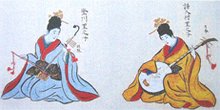 Historically, the Ryūkyū Kingdom, also known as Okinawa, maintained close relations with both China and Japan. By absorbing, blending, and elaborating upon various cultural elements from both countries, Ryūkyū developed several different types of music, dance, and theater. This lecture will address how, in response to the expectations of China and Japan, the Ryūkyūan people tried to fabricate self-image through their performing arts as well as how they carefully selected these performances in accordance with time, place, and occasion.
Historically, the Ryūkyū Kingdom, also known as Okinawa, maintained close relations with both China and Japan. By absorbing, blending, and elaborating upon various cultural elements from both countries, Ryūkyū developed several different types of music, dance, and theater. This lecture will address how, in response to the expectations of China and Japan, the Ryūkyūan people tried to fabricate self-image through their performing arts as well as how they carefully selected these performances in accordance with time, place, and occasion. Co-sponsored by the Institute for Medieval Japanese Studies and the Center for Ethnomusicology.
February 8th, 2007
落語 RAKU-GO: Traditional Japanese Comic StorytellingKatsura Koharudanji (Special Advisor for Cultural Exchange, Agency for Cultural Affairs)
403 Kent Hall, Columbia University (116th St. and Amsterdam Ave.)
6:00 – 7:30 PM
In Japanese; performance with English subtitles.
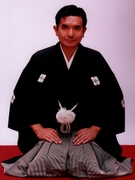
Katsura Koharudanji III performs in the Kamigata rakugo style, which originated in Osaka. He recently pioneered the performance of rakugo in temples and has established a non-profit organization dedicated to the promotion of rakugo. He has received the Japanese Ministry of Culture's New Performers Award and Europe's most prestigious comedy prize, the Perrier Award. Koharudanji has performed extensively in Japan and throughout the world, including at the Edinburgh Fringe Festival.
February 15th, 2007
"Ancient Soundscapes: New Echoes from Japan's Musical Past" Program SeriesThe Ancient Asian Harp Reborn
Bo Lawergren (Professor Emeritus, Hunter College) and Tomoko Sugawara (Harpist and Kugo Player)
301 Philosophy Hall, Columbia University (116th St. and Amsterdam Ave.)
6:00 – 8:00 PM
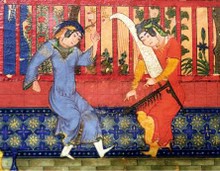 The angular harp, with an L-shaped body, arose in Mesopotamia around 2000 BCE and, following the Silk Road, reached China and eventually Korea and Japan. Artists in all the cultures it penetrated loved to depict its beautiful shape and their local musicians playing it. Around the year 1000 CE, however, the European harp of irregular triangular shape emerged, and by 1600 the angular harp vanished. Recently, music archeologists have reconstructed the angular harp (called the kugo in Japan and konghou in China). The lecture will include a kugo performance of resurrected ancient tunes from T’ang China and Nara Japan as well as modern pieces composed for the kugo.
The angular harp, with an L-shaped body, arose in Mesopotamia around 2000 BCE and, following the Silk Road, reached China and eventually Korea and Japan. Artists in all the cultures it penetrated loved to depict its beautiful shape and their local musicians playing it. Around the year 1000 CE, however, the European harp of irregular triangular shape emerged, and by 1600 the angular harp vanished. Recently, music archeologists have reconstructed the angular harp (called the kugo in Japan and konghou in China). The lecture will include a kugo performance of resurrected ancient tunes from T’ang China and Nara Japan as well as modern pieces composed for the kugo. Co-sponsored by the Institute for Medieval Japanese Studies.
February 22nd, 2007
"Ancient Soundscapes: New Echoes from Japan's Musical Past" Program SeriesGagaku Concert: From the Classiscs to T. Takemitsu and H. Miura
Performers: Hitomi Nakamura, Takeshi Sasamoto, Mayumi Miyata, Naoko Terauchi, and Jacqueline Leclair
Low Library, Columbia University (116th St. and Broadway)
6:00 – 7:30 PM Concert, 7:30 – 8:30 PM Reception
Featuring:
Hitomi Nakamura – hichiriki
Mayumi Miyata – shō
Takeshi Sasamoto – ryūteki; biwa
With contributions by
Naoko Terauchi – kakko; koto
Jaqueline Leclair – oboe
February 24th, 2007
"Ancient Soundscapes: New Echoes from Japan's Musical Past" Program SeriesOpen Workshop for Musicians and Composers (Beginners welcome)
403 Kent Hall, Columbia University (116th St. and Amsterdam Ave.)
10:00 AM – 4:00 PM
Prior registration is required for this event. Please send an email to medievaljapan@columbia.edu, or send a fax to 212-854-1470, to request a registration form. Space will be offered on a first-come, first-served basis. Registration forms will be accepted until February 16.
March 8th, 2007
"Japan Mapped: Culture and Cartography" Lecture SeriesMapping Mandalic Metaphors in Shingon Buddhist Tantric Theology
David L. Gardiner (Colorado College)
403 Kent Hall, Columbia University (116th St. and Amsterdam Ave.)
6:00 – 7:30 PM
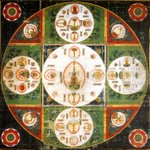 While material mandalas, often painted scrolls that are centrally placed in a ritual setting, are vital to Shingon Buddhist religious practice, the term mandala has many other meanings in the tradition. This talk will analyze how the term mandala is used as a metaphor for the world reenvisioned as a result of contemplative practice, and how "mandala" can thus be seen as a metaphor for the sought-after state of awakening.
While material mandalas, often painted scrolls that are centrally placed in a ritual setting, are vital to Shingon Buddhist religious practice, the term mandala has many other meanings in the tradition. This talk will analyze how the term mandala is used as a metaphor for the world reenvisioned as a result of contemplative practice, and how "mandala" can thus be seen as a metaphor for the sought-after state of awakening. March 29th, 2007
"Japan Mapped: Culture and Cartography" Lecture SeriesThe Ragged Edge: Early Modern Cartography and the Boundaries of Japan
Ronald P. Toby (University of Illinois)
403 Kent Hall, Columbia University (116th St. and Amsterdam Ave.)
6:00 – 7:30 PM
April 3rd, 2007
2007 Annual Soshitsu Sen XV Distinguished Lecture on Japanese Culture
Lecture by Natsuo Kirino
Award Ceremony for the Second Annual Donald Keene Prize for the Promotion of Japanese Culture
Awarded to the Shincho Foundation for the Promotion of Japanese Literature
Low Library Rotunda, Columbia University (116th St. and Broadway)
6:00 PM
For more information about this event see Sen Lecture, 2007.
April 5th, 2007
Educating 'Osan': Shunga (Erotic) Parodies of 18th-century Women's Moral TextbooksAndrew Gerstle (School of Oriental and African Studies, University of London)
403 Kent Hall, Columbia University (116th St. and Amsterdam Ave.)
6:00 – 7:30 PM
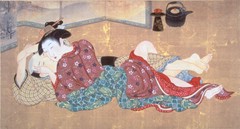 Beginning around 1700, publishers in Kyoto and Osaka began to issue popular, illustrated textbooks for women's education in considerable numbers. The most famous was Onna daigaku takara-bako 『女大学宝箱』(The Treasure Chest of Great Learning for Women, 1716), a best seller that was reprinted many times into the Meiji era. In the 1750s an Osaka publisher produced a shunga parody Onna dairaku takara-beki 『女大楽宝開』 (Great Pleasures for Women and Their Treasure Boxes). This was the first of many parodies produced by the artist Tsukioka Settei (1726-86) and others. Although these erotic parody books have been known about in scholarly and artistic circles over the centuries, they have been almost entirely neglected from Meiji until recently due to censorship and taboos about shunga. This talk will argue that these shunga parodies were radical and subversive texts on sexuality in Japan that explicitly asserted women's right to pleasure.
Beginning around 1700, publishers in Kyoto and Osaka began to issue popular, illustrated textbooks for women's education in considerable numbers. The most famous was Onna daigaku takara-bako 『女大学宝箱』(The Treasure Chest of Great Learning for Women, 1716), a best seller that was reprinted many times into the Meiji era. In the 1750s an Osaka publisher produced a shunga parody Onna dairaku takara-beki 『女大楽宝開』 (Great Pleasures for Women and Their Treasure Boxes). This was the first of many parodies produced by the artist Tsukioka Settei (1726-86) and others. Although these erotic parody books have been known about in scholarly and artistic circles over the centuries, they have been almost entirely neglected from Meiji until recently due to censorship and taboos about shunga. This talk will argue that these shunga parodies were radical and subversive texts on sexuality in Japan that explicitly asserted women's right to pleasure. April 12th, 2007
Japan Studies and the Critique of American IndividualismAmy Borovoy (Princeton University)
403 Kent Hall, Columbia University (116th St. and Amsterdam Ave.)
6:00 – 7:30 PM
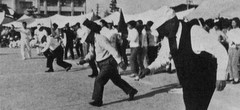 This lecture will consider how Japan has functioned as a space in which to imagine alternative conceptions of modernity and liberal democracy. Specifically, this talk will focus upon the engagement between post-war Nihonjinron and American anthropologists.
This lecture will consider how Japan has functioned as a space in which to imagine alternative conceptions of modernity and liberal democracy. Specifically, this talk will focus upon the engagement between post-war Nihonjinron and American anthropologists. April 20th, 2007
Award Ceremony for the Japan-U.S. Friendship Commission Prize for the Translation of Japanese LiteratureC.V. Starr East Asian Library, Kent Hall, Columbia University (116th St. and Amsterdam Ave.)
6:00 PM
Professor Joel Cohn
For his translation of Botchan: A Modern Classic by Natsume Soseki
Professor Edward Fowler
For his translation of A Man with No Talents: Memoirs of a Tokyo Day Laborer by Ōyama Shirō
April 26th, 2007
The Changing Face of Contemporary Japanese Art: Morimura Yasumasa's Henshin as PerformanceEric C. Shiner (Guest Curator, Japan Society)
403 Kent Hall, Columbia University (116th St. and Amsterdam Ave.)
6:00 – 7:30 PM
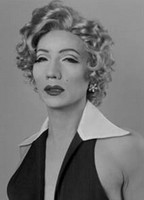 |
Photo credit: M's self-portrait No. 56 (or "as Marilyn Monroe"). 355 x 279mm. Gelatin Silver Print. 1995. Courtesy of the artist and MEM, Inc., Osaka.
May 3rd, 2007
The Work of the Nakashima Studio at Columbia University
Victoria Rodriguez Thiessen (Independent Scholar, Sotheby's)
403 Kent Hall, Columbia University (116th St. and Amsterdam Ave.)
6:00 – 7:30 PM
May 4th, 2007
Tenshin Okakura Kakuzo and Sister Nivedita: On an Intellectual Exchange in Modernizing AsiaShigemi Inaga (International Research Center for Japanese Studies and Graduate School for Advanced Studies, Kyoto, Japan; Kluge Scholar, Library of Congress)
403 Kent Hall, Columbia University (116th St. and Amsterdam Ave.)
12:00 – 1:30 PM
Shigemi INAGA, Professor at International Research Center for Japanese Studies and the Graduate School for Advanced Studies, Kyoto, Japan, is currently a Kluge Scholar at the Library of Congress, Washington, DC. Prof. Inaga's many publications include Kaiga no tasogare (Twilight of Painting: Edouard Manet's Posthumous Struggle for Glory, 1997) and Kaiga no tōhō: Orientalism kara Japonisme e (The Orient of Painting: From Orientalism to Japonisme, 1999).
May 5th (Saturday) – May 6th (Sunday)
Symposium Honoring the Work of Henry SmithObjects and Images: Exploring Visual and Material Culture in Japan
403 Kent Hall, Columbia University (116th St. and Amsterdam Ave.)
9:00AM – 6:00PM, Saturday; 10:00AM – 6:00PM, Sunday
Preregistration is not required for this symposium.
Organizers: Jordan Sand (sandj@georgetown.edu) and
Greg Pflugfelder (gmp12@columbia.edu)
For a detailed schedule of events and a list of panelists and papers, click here
Co-sponsored by the Department of East Asian Languages and Cultures and the Weatherhead East Asian Institute.
September 27th, 2007
Kanō Motonobu’s Shuten Dōji Scrolls and Aspects of the Monstrous in Medieval JapanQuitman E. Phillips (University of Wisconsin-Madison)
403 Kent Hall, Columbia University (116th St. and Amsterdam Ave.)
6:00 – 7:30 PM
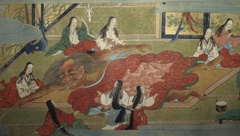 Shuten Dôji was one of the best known monsters in late medieval and early modern Japan, the story of his downfall appearing frequently in texts, paintings, and prints. While the earliest extant version of the tale appeared in the fourteenth century, it became a staple of Japanese visual culture with its adoption by the Kanô School starting in the sixteenth century. Was there more to its popularity than the simple fact that it was a rousing good tale? Modern commentators have suggested that the tale draws upon anxieties about threats ranging from plagues to foreigners. This talk will present a synopsis of the Shuten Dôji story illustrated with slides from Kanô Motonobu's 1522 handscroll version and discuss modes of interpreting the story drawing on particular Shuten Dôji scholarship and recent trends in "monster theory."
Shuten Dôji was one of the best known monsters in late medieval and early modern Japan, the story of his downfall appearing frequently in texts, paintings, and prints. While the earliest extant version of the tale appeared in the fourteenth century, it became a staple of Japanese visual culture with its adoption by the Kanô School starting in the sixteenth century. Was there more to its popularity than the simple fact that it was a rousing good tale? Modern commentators have suggested that the tale draws upon anxieties about threats ranging from plagues to foreigners. This talk will present a synopsis of the Shuten Dôji story illustrated with slides from Kanô Motonobu's 1522 handscroll version and discuss modes of interpreting the story drawing on particular Shuten Dôji scholarship and recent trends in "monster theory."October 4th, 2007
Doubles: Japan and America's Intercultural Children (1995)A Screening and Discussion
Regge Life (Documentary film maker, Global Film Network, Inc.)
Held Auditorium, 304 Barnard Hall (3rd Fl.), Barnard College (117th St., between Broadway and Claremont Ave.)
6:00 – 7:30 PM
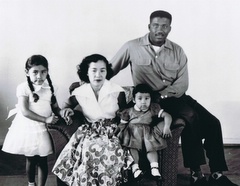 Fraternization between United States soldiers and Japanese women during the American occupation of Japan resulted in a number of children being born in and out of wedlock. In the 50 years since then, intermarriage has continued, producing a new generation of intercultural children who are growing up in both America and Japan. This documentary explores the still taboo subject of "Doubles," children born of American and Japanese parents, living in Japan and in America. Their struggle for acceptance in the rigid, homogeneous society of Japan and in the racially polarized society of the United States, gives a unique perspective to how Japanese and Americans view themselves and their relationship to the outsider or the "other."
Fraternization between United States soldiers and Japanese women during the American occupation of Japan resulted in a number of children being born in and out of wedlock. In the 50 years since then, intermarriage has continued, producing a new generation of intercultural children who are growing up in both America and Japan. This documentary explores the still taboo subject of "Doubles," children born of American and Japanese parents, living in Japan and in America. Their struggle for acceptance in the rigid, homogeneous society of Japan and in the racially polarized society of the United States, gives a unique perspective to how Japanese and Americans view themselves and their relationship to the outsider or the "other."October 11th, 2007
Daily Life and Demographics in Ancient JapanWilliam Wayne Farris (University of Hawai'i at Mānoa)
403 Kent Hall, Columbia University (116th St. and Amsterdam Ave.)
6:00 – 7:30 PM
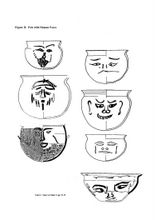 What was the population of Japan during the ancient age (700-1150)? This lecture attempts to answer this important question and provide support for demographic trend so adduced by examining mortality factors such as disease, famine and war and background variables such as agricultural and industrial technology, commerce and cities, and the family and material life. As a result of this research, at long last historians will have defensible population figures for Japan from the Jomon age to 1700.
What was the population of Japan during the ancient age (700-1150)? This lecture attempts to answer this important question and provide support for demographic trend so adduced by examining mortality factors such as disease, famine and war and background variables such as agricultural and industrial technology, commerce and cities, and the family and material life. As a result of this research, at long last historians will have defensible population figures for Japan from the Jomon age to 1700.
October 24th, 2007
Soshitsu Sen XV Distinguished Lecture on Japanese CultureIn the Light of East Asia: A Reading with Commentary
Gary Snyder (Professor Emeritus, University of California-Davis; writer; tree-farmer)
Low Memorial Library Rotunda, Columbia University (116th St., between Broadway and Amsterdam Ave.)
6:00 - 7:30 PM
See the 2007 Sen Lecture for more information on this event.
November 8th, 2007
The Fate of the Japanese Language in the Age of EnglishMinae Mizumura (Novelist)
403 Kent Hall, Columbia University (116th St. and Amsterdam Ave.)
6:00 – 7:30 PM
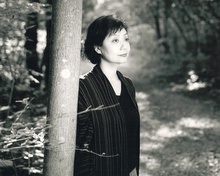 Abstract by Minae Mizumura: We who write, read, and study modern Japanese literature take for granted the existence of modern Japanese literature. We also take for granted that it should exist in the present form, written in the Japanese language, with kanji mixed into kanamoji. It is true that, soon after Japan came into contact with the West, the western-style novel began to flourish in the Japanese language as if it were the most natural course of events. Yet, when we examine the past, we see that specific historical conditions were necessary for modern Japanese literature as we know it to emerge and to thrive. Moreover, when we examine the present, we see that those very conditions are quietly disappearing as we move deeper into the age of English. Indeed, what I face today as a Japanese writer is the uncertain fate of the Japanese language itself. For it may well be that the Japanese language, which attained the status of kokugo, the national language, in the days following the Meiji Restoration, is now turning into a lesser language – a mere local language, incapable of shouldering the intellectual, moral, and aesthetic burdens that a language ought to shoulder if it is to remain the true medium of literature.
Abstract by Minae Mizumura: We who write, read, and study modern Japanese literature take for granted the existence of modern Japanese literature. We also take for granted that it should exist in the present form, written in the Japanese language, with kanji mixed into kanamoji. It is true that, soon after Japan came into contact with the West, the western-style novel began to flourish in the Japanese language as if it were the most natural course of events. Yet, when we examine the past, we see that specific historical conditions were necessary for modern Japanese literature as we know it to emerge and to thrive. Moreover, when we examine the present, we see that those very conditions are quietly disappearing as we move deeper into the age of English. Indeed, what I face today as a Japanese writer is the uncertain fate of the Japanese language itself. For it may well be that the Japanese language, which attained the status of kokugo, the national language, in the days following the Meiji Restoration, is now turning into a lesser language – a mere local language, incapable of shouldering the intellectual, moral, and aesthetic burdens that a language ought to shoulder if it is to remain the true medium of literature. November 15th, 2007
Global Sushi: Soft Power and Hard RealitiesTheodore C. Bestor (Harvard University)
403 Kent Hall, Columbia University (116th St. and Amsterdam Ave.)
6:00 – 7:30 PM
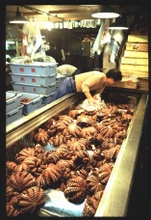 Global sushi flows in multiple directions. In the past generation, sushi has spread outward from Japan throughout the globe, riding the wave of Japan's soft power and "gross national cool." Sushi has migrated across a culinary spectrum from exotic, inaccessible, and inedible, to occupy table space both as haute cuisine and take-out fast food, becoming an icon of post-modern global chic in the process. Simultaneously, the fishing industries around the world have been re-oriented. The Japanese fishing industry has expanded its activities in every ocean of the globe, local industries have been oriented toward Japanese markets, and more species have become targets for export to Japan and newly emerged secondary markets in metropolitan centers around the globe.
Global sushi flows in multiple directions. In the past generation, sushi has spread outward from Japan throughout the globe, riding the wave of Japan's soft power and "gross national cool." Sushi has migrated across a culinary spectrum from exotic, inaccessible, and inedible, to occupy table space both as haute cuisine and take-out fast food, becoming an icon of post-modern global chic in the process. Simultaneously, the fishing industries around the world have been re-oriented. The Japanese fishing industry has expanded its activities in every ocean of the globe, local industries have been oriented toward Japanese markets, and more species have become targets for export to Japan and newly emerged secondary markets in metropolitan centers around the globe.
This lecture explores the sushi boom and the appropriations of sushi as popular culture, the interralationship between this projection of soft power and the hard realities of the global fishing industry, the conflicts over fishing rights and quotas, the environmental issues of overfishing, the impact of aquaculture, and the struggles to create global fisheries management regimes.
November 29th, 2007
Eccentric Spaces, Hidden Histories: Narrative, Ritual, and Royal Authority from The Chronicles of Japan to The Tale of the Heike - A Book TalkDavid T. Bialock (University of Southern California)
403 Kent Hall, Columbia University (116th St. and Amsterdam Ave.)
6:00 – 7:30 PM
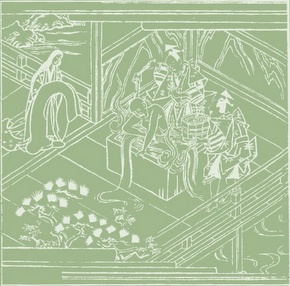 After The Tale of Genji, the greatest work of classical Japanese literature is arguably the fourteenth-century historical narrative, The Tale of the Heike. To date, however, most English-language scholarship on The Tale of the Heike has tended to focus on one well-known variant of the work, resulting in an incomplete view of the tale's narrative world. This lecture will highlight some of the major themes in David Bialock's recent book, Eccentric Spaces, Hidden Histories, which open up fresh perspectives on medieval Heike narrative by connecting it to a range of problems centered on narrative, ritual, space, and Japan's changing views of China from the Nara to the early medieval periods.
After The Tale of Genji, the greatest work of classical Japanese literature is arguably the fourteenth-century historical narrative, The Tale of the Heike. To date, however, most English-language scholarship on The Tale of the Heike has tended to focus on one well-known variant of the work, resulting in an incomplete view of the tale's narrative world. This lecture will highlight some of the major themes in David Bialock's recent book, Eccentric Spaces, Hidden Histories, which open up fresh perspectives on medieval Heike narrative by connecting it to a range of problems centered on narrative, ritual, space, and Japan's changing views of China from the Nara to the early medieval periods.